The Industrial Districts of Former East Berlin Are Now Some of the City's Most Exciting Creative Hubs
Unused buildings and industrial facilities find new life in the arts.
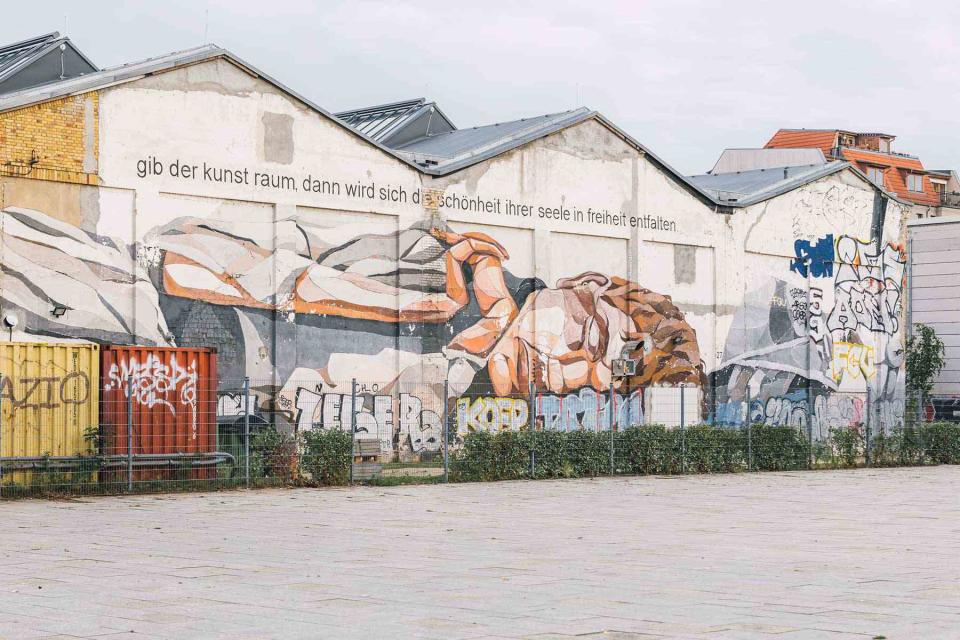
Daniel Mueller
Murals and street art cover industrial buildings in Oberschöneweide, once the center of East Germany’s energy industry.When I've told non-Germans that I live in Berlin, the same question has come up more than once: “West or East?” Though the Wall fell in 1989, in some minds the division still stands. On walks in my neighborhood of Baumschulenweg, I confront a physical reminder of this whenever I cross a double row of cobblestones that marks where the Wall once stood.
Though some visitors may not realize it, many popular attractions were in East German territory, including the Brandenburg Gate, Alexanderplatz, and Museum Island. But it’s also worth going farther into the less touristed neighborhoods of East Berlin, where creative projects and adaptive-reuse initiatives are transforming unused buildings — many with their own fraught history — into community spaces and incubators for the Berlin art world.
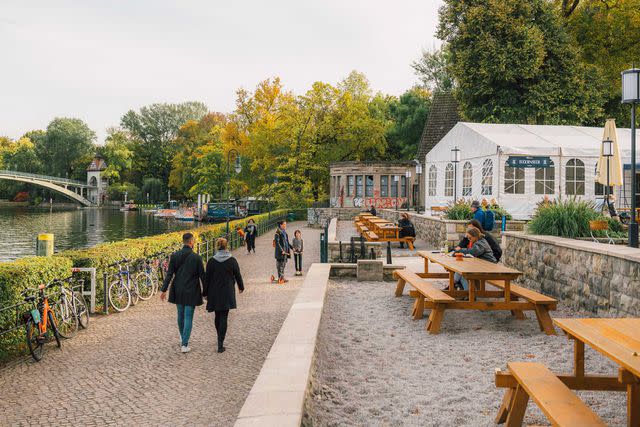
Daniel Mueller
The beer garden at Zenner House, a repurposed villa on Berlin’s Spree river.In Plänterwald, a forest on the banks of the river Spree, I’ve watched as more and more of the new Spreepark has emerged over the months. Opened in 1969, its predecessor, VEB Kulturpark, was the only theme park of its kind in East Germany — and is said to have attracted around 1.5 million visitors annually. The site and its abandoned attractions, long hidden beneath the overgrowth, are being developed into a large public space with rides, arts venues, and a restaurant. Also under way nearby is the transformation of Zenner House, a 200-year-old estate in neighboring Treptower Park, which now houses a riverside beer garden and concert venue, with more arts spaces in the works.
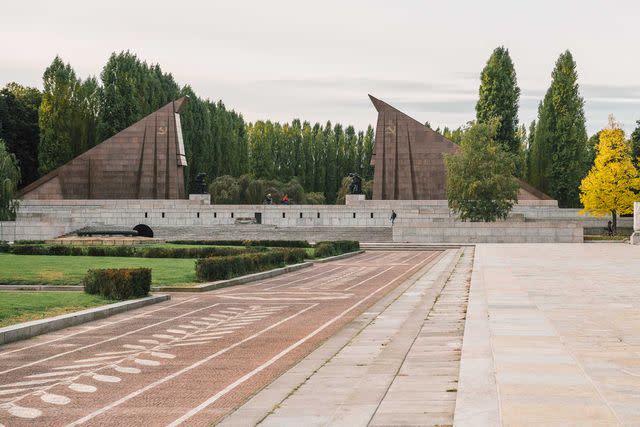
Daniel Mueller
The Soviet War Memorial in Treptower Park, designed by architect Yakov Belopolsky.One day last fall, I made my way across the river to Rummelsburg, where a luxury residential complex called the BerlinCampus now occupies what was once Germany’s largest workhouse, opened in 1879, and then later an East German prison. Just down the road, I passed by Sisyphos, a popular nightclub in a former dog-food factory where on weekends the hedonism doesn’t end until Monday morning. The same stretch of street took me past Flussbad, a multipurpose arts center that’s set to open in 2024 in a Weimar-era public-bath complex on the Spree, and then Funkhaus, a music and event space in the former state broadcasting center.
My trek brought me east to Schöneweide — an area spread across both banks of the river that deserves its own full day of wandering. In the “upper” district, Oberschöneweide, massive brick factory buildings loom as impressive reminders of East Germany’s once-booming energy industry. (In the early 20th century, Berlin earned the nickname “Electropolis.”) The unique architecture and ample space have inspired artists, including Jorinde Voigt and Olafur Eliasson, to set up their private studios in the historic industrial halls.
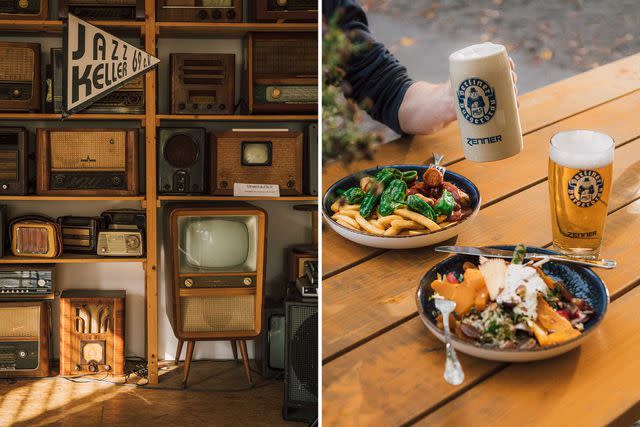
Daniel Mueller
From left: East Berlin–made radios, televisions, and other vintage appliances at Industriesalon Schöneweide; brews and small plates at Zenner House.“All of this has emerged in the last thirty years,” says Solange Lingnau, director of the Reinbeckhallen, once a factory producing high-voltage systems that now houses workshops, event spaces, and a gallery for contemporary art. “The neighborhood has transformed while still keeping a lot of its identity and residents. For them, the development adds value to their own history.” To learn more, there are walking tours hosted by Industriesalon Schöneweide, a museum of industry inside an old transformer factory.
Across a pedestrian bridge to Niederschöneweide, the “lower” district on the Spree’s southern bank, is the Hasselwerder Villa — originally built in 1907 as a residence for Richard and Elsbeth Lehmann, Berliners who were deported and killed by the Nazis. The house was used as a military command station, which it remained until the end of East Germany. This building, too, has found yet another life as Novilla, a center for the international creative collective Moving Poets, which hosts events and readings. “It’s maybe a little harder to fall in love with Schöneweide,” says founder and artistic director Till Schmidt-Rimpler. “But once you develop a connection, it’s yours to see.”
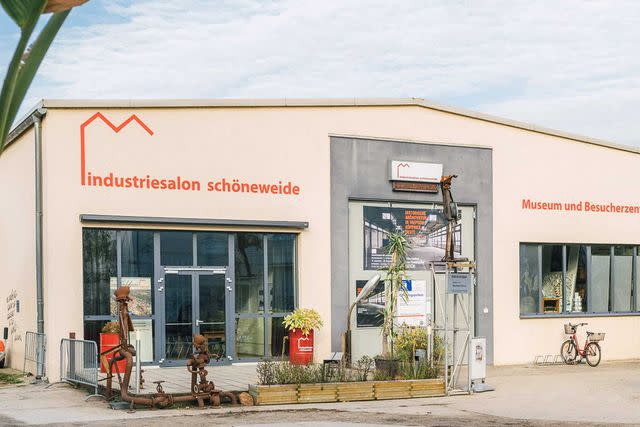
Daniel Mueller
The Industriesalon Schöneweide museum is housed in a former electronics factory.From the villa, I started my journey back home, stopping for a cold beer at Revier Südost, a cultural center with a beer garden and outdoor market, in the beautiful old Bärenquell Brewery. The transformations there are just beginning as plans for more commercial spaces in the historic complex unfold. I understood what Schmidt-Rimpler meant: these parts of Berlin may seem harder to get to know, but if you make the effort, you’ll see the future is hidden in plain sight.
A version of this story first appeared in the October 2022 issue of Travel + Leisure under the headline "Renewable Energy."
For more Travel & Leisure news, make sure to sign up for our newsletter!
Read the original article on Travel & Leisure.

